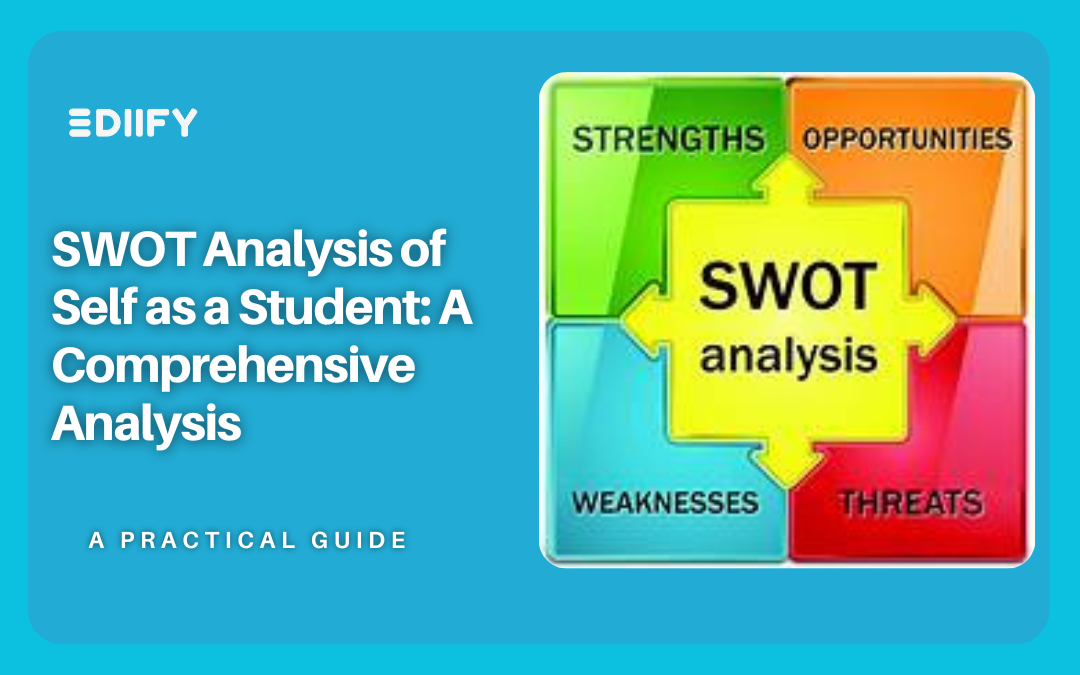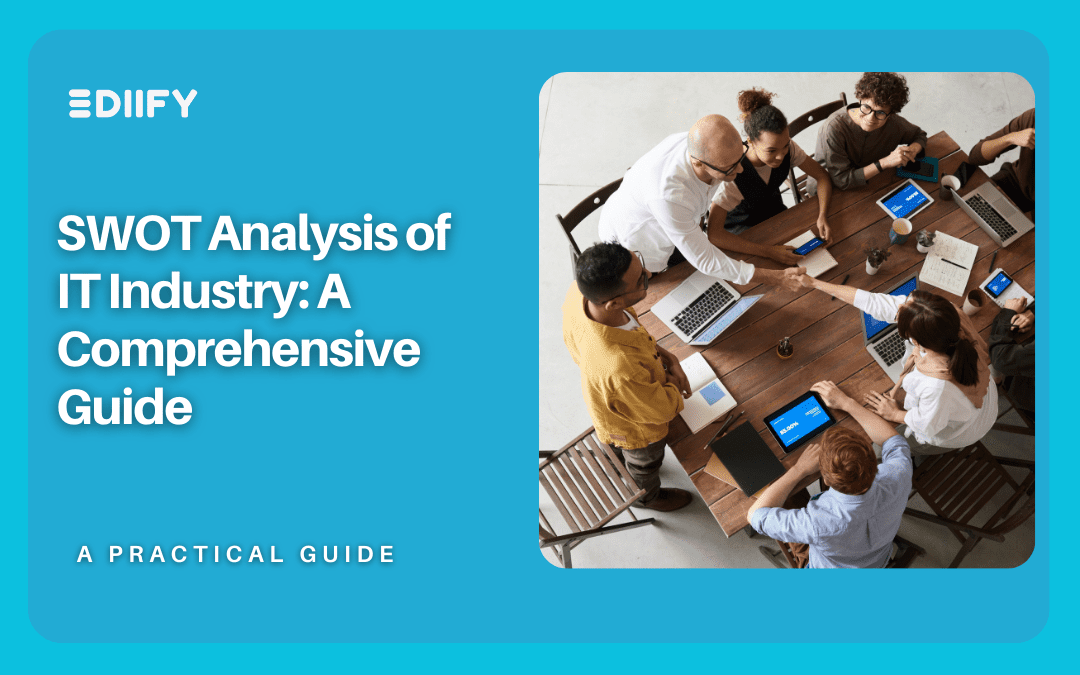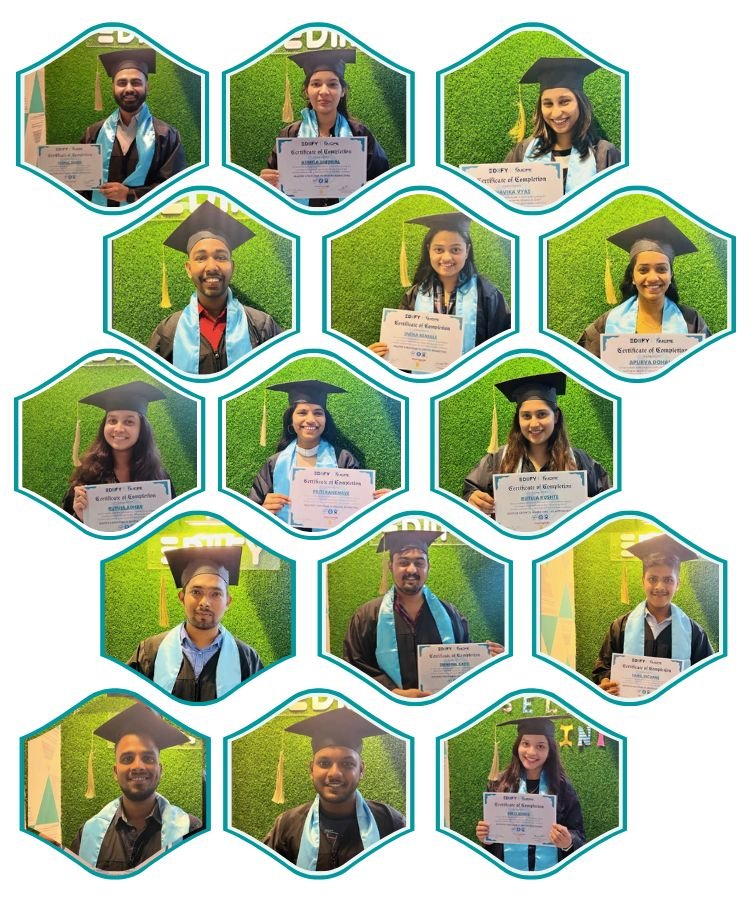
SWOT Analysis of Self as a Student: A Comprehensive Analysis
Introduction:
Embarking on the journey of education is not merely about acquiring knowledge; it’s also a process of self-discovery and personal growth. As a student, I understand the importance of periodically evaluating my strengths, weaknesses, opportunities, and threats (SWOT) to navigate through the complexities of academia effectively. In this blog, I delve into a SWOT analysis of self as a student, aiming to uncover areas for improvement, capitalize on strengths, seize opportunities, and mitigate threats, all with the overarching goal of achieving academic excellence.
Take a view on the below exploring my life as a Student a detailed analysis
https://ediify.com/exploring-my-life-as-a-student-a-detailed-analysis/

Strengths:
Reflecting on my journey as a student, I recognize several inherent strengths that have contributed to my academic success. Firstly, I pride myself on possessing strong organizational skills. These skills enable me to manage my time effectively, ensuring that I prioritize tasks efficiently and maintain a healthy balance between academic commitments, extracurricular activities, and personal life. Additionally, I approach learning with genuine enthusiasm and curiosity. This innate thirst for knowledge drives me to explore new concepts and ideas, fostering a deeper understanding of subjects beyond the confines of the classroom curriculum. Moreover, my strong interpersonal skills facilitate effective communication and collaboration with peers and educators, creating a supportive academic environment conducive to learning and growth.
Weaknesses:
Despite my strengths, I am not immune to certain weaknesses that pose challenges to my academic journey. Procrastination is a recurring obstacle that I often find myself grappling with. This tendency to postpone tasks until the last minute not only induces unnecessary stress but also compromises the quality of my work. Additionally, I occasionally struggle with time management, particularly when faced with multiple deadlines or competing priorities. This inefficiency in managing my time effectively hampers my productivity and impedes my ability to achieve optimal academic outcomes. Furthermore, while I possess strong interpersonal skills, I sometimes find it challenging to assert myself in group settings or express my opinions assertively, hindering effective collaboration and participation.
Opportunities:
Identifying and capitalizing on opportunities is essential for maximizing my potential as a student. One significant opportunity lies in the realm of extracurricular activities and leadership roles. Engaging in clubs, societies, or volunteer initiatives not only enriches my college experience but also nurtures essential skills such as leadership, teamwork, and problem-solving. Additionally, leveraging technological tools and resources can enhance my learning experience and broaden my academic horizons. Platforms offering online courses, educational podcasts, or virtual study groups provide avenues for acquiring new knowledge and skills beyond traditional classroom settings. Furthermore, seeking mentorship from professors or industry professionals presents an invaluable opportunity to gain insights, guidance, and support tailored to my academic and career aspirations.
Threats:
Navigating through academic challenges requires vigilance against potential threats that may hinder my progress. One notable threat is academic pressure and competition, which can lead to stress, burnout, and mental health concerns. The constant pursuit of perfection or comparison with peers may undermine my confidence and detract from my focus on personal growth and learning. Moreover, external distractions such as social media, extracurricular commitments, or personal obligations pose a threat to my academic performance if not managed effectively. Succumbing to these distractions can disrupt my study routines, resulting in decreased productivity and subpar academic outcomes. Additionally, unforeseen circumstances such as health issues, family emergencies, or financial constraints may disrupt my academic journey, necessitating resilience and adaptability to overcome.
Take a look at the below blog exploring the top interview questions
https://ediify.com/exploring-the-top-interview-questions-to-ask/
Conclusion:
Conducting a SWOT analysis of self as a student has provided invaluable insights into my academic dynamics, highlighting areas of strength, weakness, opportunity, and threat. By leveraging my strengths, addressing weaknesses, capitalizing on opportunities, and mitigating threats, I can create a conducive environment for personal and academic growth. Moving forward, I am committed to fostering a proactive approach to learning, embracing challenges as opportunities for development, and cultivating a resilient mindset to navigate through academic endeavors successfully. Through continuous self-reflection and improvement, I am determined to unlock my full potential and achieve excellence in my academic pursuits.

For more information visit the mentioned website
https://www.getmyuni.com/articles/swot-analysis-for-students













